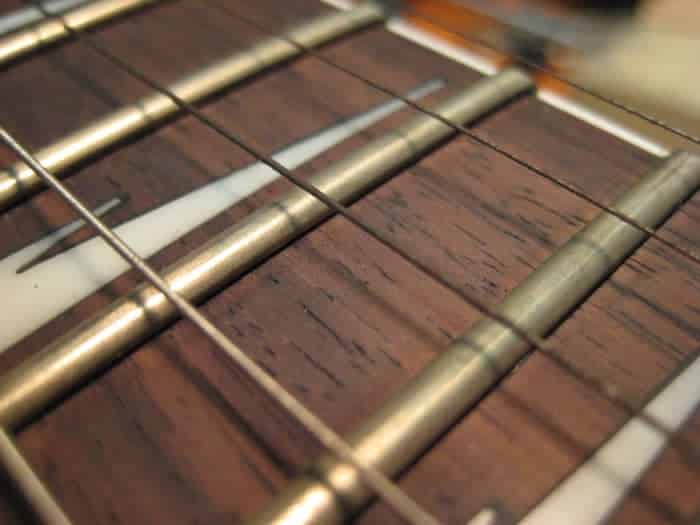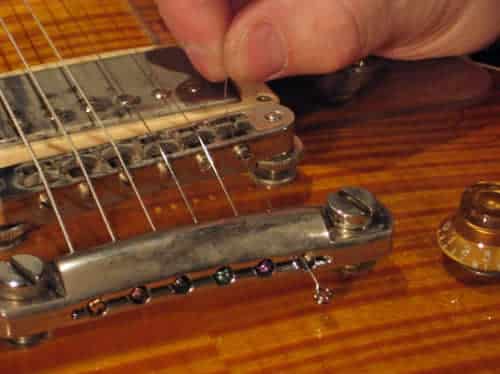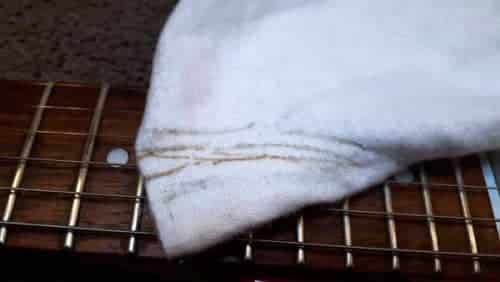If you own a guitar but are wondering when to replace your strings and worry about when it will break, this is the article for you.
One of the parts that need the most attention and care is the strings. But, how to know if your guitar string is about to break? Let's follow the following article to find the answer!
How to know if your guitar string is about to break?
When strings get old, replacement is a necessary step to keep your playing experience uninterrupted. To make sure your string is about to break and it's time to replace it, look out for these signs:

Some ways to know your guitar string is going to break
The sound is out of rhythm
Sound is one of the most obvious signs of string distortion. After a period of use, your strings can be affected by many external factors such as temperature or the force you exert when playing.
With new guitars, you can completely pull strings backup and continue playing. But you can only use this a few times because overuse can cause it to break or create pressure on more parts of your guitar.
There are even many situations where users have been injured by performing this move with old guitars.

Stretching the strings too much can be harmful
This is one of the easiest ways to recognize those with a lot of experience. However, if you are a beginner, ask the experts to check and correct to avoid damaging your guitar yourself!
The sound of the guitar becomes hard to hear
Depending on the type of guitar you choose, most new guitars will sound clear, bright, and crisp. But with a guitar that has been in use for a while, the affected string texture also changes the instrument’s sound.
Professional musicians, especially those who use the instrument to perform and earn money, will have to pay close attention to the sound and clarity that their instrument is emitting.
Therefore, these people often have to prepare themselves with new sets of strings that can be changed as soon as they feel necessary.
However, not all music is suitable for clear sound. Some have deeper tones or emotions that are more suitable for instruments that have been used for a while rather than new strings.
Of course, you should not be subjective and abuse this, but prepare yourself with spare sets of wires that can be replaced if needed.
Try to avoid unexpected wire breaks because you won't be able to handle them in time.
Color change from the original
If you are not delicate and sensitive enough or are a beginner, it will be difficult for you to notice the difference in the sound of the old strings. At this point, the color change is one of the most easily recognizable elements.
As you probably already know, after a period of use, the strings are affected by many factors such as the environment, dirt, and sweat that make the strings change from the original color.
Specifically, the sweat and dirt from your hands will cling to the strings, along with time and prolonged impact, causing the strings to erode and become more easily broken.
Guitar strings are mainly divided into two types: Nickel/steel strings and copper strings. The sign for you to replace a new nickel wire is when you notice its opaque color.
On the other hand, copper wire often loses its luster after a long time of use, and you will notice a darker brown color if you look closely.
These signs are easily recognizable to the naked eye, and it is essential to replace your set of wires. This is not only for aesthetics but also as a way to ensure the durability of your guitar.
The strings become stiffer and more brittle
Usually, it is quite difficult for you to recognize this sign on your own when you play the guitar every day.
It's only when you play a new guitar right next to an old one that the distinction becomes a little easier and clearer.
New guitar strings are flexible and elastic. But, after a period of use, it will become hard because it is affected by many factors such as temperature, environment, and weather.
The string aging will be even faster for hot and humid environments.
You may also feel more pain in your hands while playing because it takes more force to get to the level of sound you want. At that time, remember to check the wire and prepare to replace a new set.
The strings get dirty easily

A little test for your guitar is to slide your finger along the strings. Accordingly, if you feel great friction, discomfort and are no longer as smooth as before, this is a sign that your guitar has been covered with a lot of dust.
Dirty strings not only affect the aesthetics, but the clarity of the sound is also limited.
You should pay attention to cleaning it regularly so that the playing experience can be better and the sound emitted will also be more rhythmic.
Conclusion
These are our tips on how to know if your guitar string is about to break. With just a little attention, you can keep your guitar like new and can be used for a long time.
If you are still wondering about the above signs, the best way to keep your guitar in perfect condition is to have it serviced regularly and change your strings about every 1-2 months in specialized stores, depending on how often you use the instrument.
